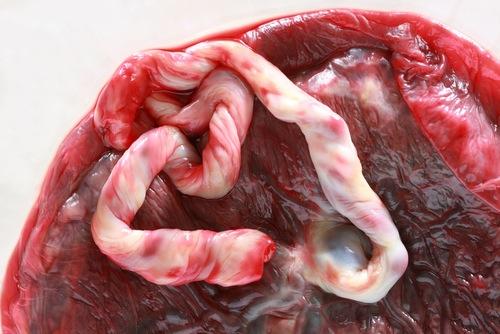

By Sandy Hemphill, Contributing Writer, BabyMed
The placenta is one of the most mystifying organs in the human body. It is the only organ that can be grown in an adult body and every child’s life depends on it. Study of the placenta is very tricky business since the organ exists only during pregnancy, a time when access to the placenta can jeopardize the pregnancy itself.
Animal studies and recent technological advances in the equipment used for medical applications have proven invaluable to the understanding of the placenta and its structure, function, and role in pregnancy but a more in-depth study of the human placenta is desired. For this reason, the National Institutes of Health have awarded $46 million that will fund 19 research projects across the US. This effort — The Human Placenta Project — is being coordinated by the Eunice Kennedy Shriver National Institute of Child Health and Human Development.
What We Already Know About the Human Placenta
The human placenta is frequently referred to as the afterbirth because it is expelled from the body shortly after the birth of a baby. The placenta, which develops in the womb during pregnancy, connects the uterus to the baby’s umbilical cord. It conveys oxygen-rich blood and nutrients from mother to baby and helps protect the developing fetus from attack by the mother’s immune system.
The placenta serves as fetal kidneys and liver by removing toxic waste products from the baby to the mother so her own kidneys and liver can expel this waste material. It also produces hormones that support fetal development and health of the pregnancy. Placental abnormalities are associated with gestational diabetes, preeclampsia, preterm birth, and stillbirth.
A growing body of evidence indicates the health of the placenta and the pregnancy have a lifelong effect on the health of the baby the placenta supports in utero.
What We Want to Know About the Human Placenta
Boston Children’s Hospital will use its grant money to develop MRI technology that will allow for more effective monitoring of the placenta, especially for obese women. Obesity puts a woman at high risk for placenta-related health complications and influences fetal gene expression that programs her child to be at increased risk for obesity, too.
The Virginia Commonwealth University School of Medicine will focus on bioactive lipids (fats) during pregnancy. Researchers here have already identified a lipid “fingerprint” in the urine and blood plasma that can identify which women are most likely to develop preeclampsia long before more obvious symptoms develop.
At the Montefiore Health System and Albert Einstein College of Medicine in New York, researchers expect to develop a test of blood and urine that will analyze RNA the placenta transfers from the fetus into the mother’s bloodstream. While fetal DNA remains constant during pregnancy, RNA does not. Researchers hope to use this expelled fetal RNA to monitor the health of the pregnancy and placenta to identify the threat of complications before any symptoms of distress in the mother or fetus are detectable by other means.
Catherine Spong says these and other research endeavors may increase awareness of other medical disorders, too. Spong is acting director of the Shriver institute overseeing this body of study on the human placenta.
Cancer is one area of study that Spong feels might benefit from the placenta studies. When the placenta first begins forming, it creates cells that grow into the uterine lining and attach themselves to the mother’s blood vessels. This placental cellular invasion encourages the maternal blood vessels to grow larger to deliver a healthy supply of blood to the fetus. Spong says, “If we could understand how these cells invade, grow, and know when to stop growing, it could help us understand tumor biology.”
Sources:
- "The Human Placenta Project." NIH / Eunice Kennedy Shriver National Institute of Child Health and Human Development. National Institutes of Health, 9 Sept. 2015. Web. 12 Nov. 2015.
- Reddy, Sumathi. "New Ways to Monitor Pregnancy in Real Time." The Wall Street Journal. Dow Jones & Company, Inc., 2 Nov. 2015. Web. 12 Nov. 2015.
- "Anatomy of a normal placenta." MedlinePlus. US National Library of Medicine, 28 July 2014. Web. 12 Nov. 2015.
